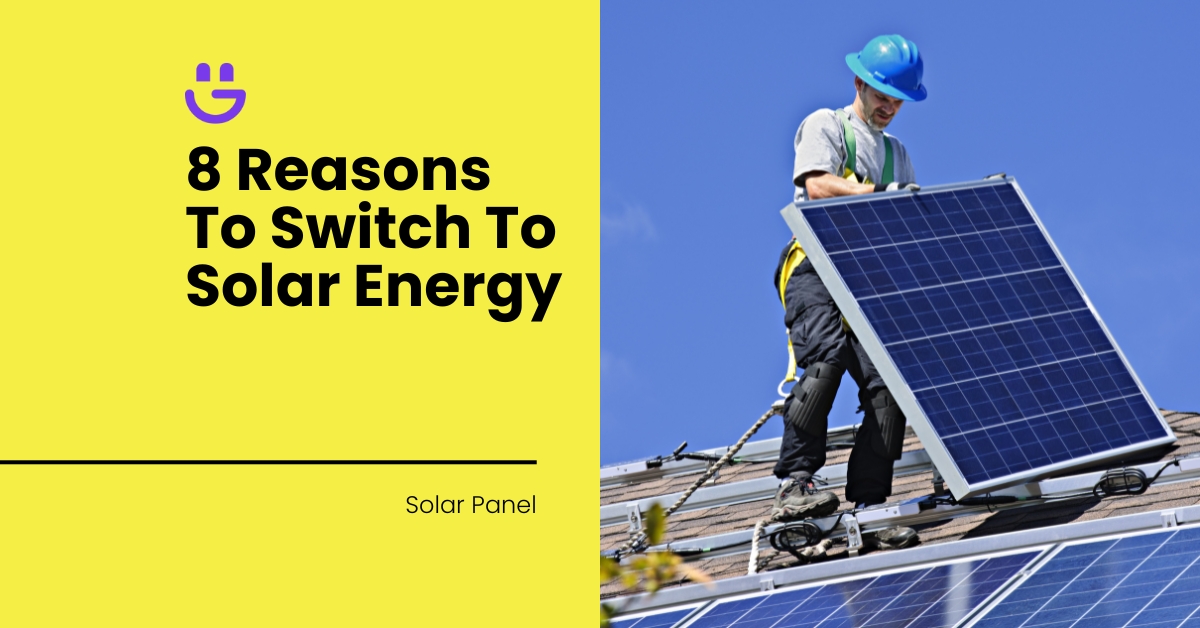Last Updated on June 9, 2025
Most people tend to view solar energy as a modern invention due to the fact that solar panels only became commercially viable within the last few decades. However, solar power has a long and fascinating history that may take you by surprise!
In this article, we’ll explore the history of solar energy— beginning with the very first uses of the sun’s heat, to the invention of the first solar cell, and finally what the solar industry looks like today!
Contents
- 1 700 BC: The Earliest Uses of Solar Energy
- 2 300 BC: The Greeks and Romans Use Solar Power for Religious Ceremonies
- 3 1767: Horace Bénédict de Saussure Invents the Heliothermometer
- 4 1839: Edmond Becquerel Discovers the Photovoltaic Effect
- 5 1883: Charles Fritts Designs the First Solar Cells Made From Selenium Wafers
- 6 1954: The First Modern Solar Cell
- 7 1960s: Solar Power Satellites in Space
- 8 1974: The First Solar Residence
- 9 1981: The Start of Solar Powered Aeroplanes
- 10 The Solar Industry Today
- 11 FAQs
- 12 Conclusion
700 BC: The Earliest Uses of Solar Energy
Sometime during the 7th century BC, humans first used sunlight to light fires. Crystals and glass magnified the power of the sun’s energy, which allowed our ancestors to create a flame. This was a major turning point in human history as warmth and light became easily accessible.
300 BC: The Greeks and Romans Use Solar Power for Religious Ceremonies
There are records of both the Greeks and Romans using solar power during their religious ceremonies. Mirrors, placed at a specific angle, were used to light torches. These mirrors became known as ‘burning mirrors’. The very same process was used in China in around 20 AD.
1767: Horace Bénédict de Saussure Invents the Heliothermometer
In 1767, meteorologist and geologist Horace Bénédict de Saussure invented the first solar-collecting cell, known as the heliothermometer. The Swiss naturalist’s invention consisted of an insulated box made of multiple layers of glass that acted as a greenhouse. When placed in direct sunlight, the glass magnified the sun’s heat and allowed the user to boil water and cook food.
The heliothermometer formed the foundation of the solar collectors developed in the 1800s, which were used to generate electricity and supply hot water.
1839: Edmond Becquerel Discovers the Photovoltaic Effect
In 1839, Edmond Becquerel identified the photovoltaic effect when he was just 19 years old. While researching in his father’s laboratory, Becquerel found that sunlight could increase electricity generation. He found this out by placing an electrolytic cell, made of two metal electrodes, in a conductive solution.
This discovery marked a major milestone in solar power’s history and it caught the attention of many international scientists.
1883: Charles Fritts Designs the First Solar Cells Made From Selenium Wafers
Throughout the 1860s, dozens of scientists worked on solar-powered innovations inspired by Becquerel’s photovoltaic cells. However, the next major breakthrough occurred in 1883 when Charles Fritts first designed solar cells constructed from selenium wafers.
Unfortunately, the efficiency of these cells was less than 1%, so they were not at all practical for commercial use.
1954: The First Modern Solar Cell
The first modern solar cell was created in the US by Calvin Fuller, Gerald Pearson and Daryl Chapin in Bell Labs in 1954. Instead of selenium, this cell was made of silicon and paved the way for all other solar power innovations. These early solar cells only had an efficiency of around 4% but it was still a huge improvement on the selenium cells.
Bell Labs demonstrated their silicon solar cells by getting them to power a small toy Ferris wheel and a radio transmitter. From this point on, the solar energy industry began to grow at a rapid pace.
1960s: Solar Power Satellites in Space
Solar energy was used to power satellites as early as 1958 when the Vanguard I made use of tiny solar-powered radios. Within that same year, the Explorer III, Sputnik-3 and Vanguard II were all kitted out with solar PV systems.
In 1964, NASA launched the first Nimbus spacecraft satellite, which ran entirely on a 470 W solar array.
1974: The First Solar Residence
In 1974, the University of Delaware designed and constructed the first solar building, known as ‘Solar One’. The project made use of both solar PV and solar thermal energy. This served as a great example of how solar power could be used to power a home.
Just five years later, in 1979, US President Jimmy Carter had solar panels installed in the White House during his presidential term.
1981: The Start of Solar Powered Aeroplanes
The ‘Solar Challenger’ was the first aircraft to run on solar power. Built by Paul MacCready, it flew from France to the UK across the English Channel.
‘Pathfinder‘ was a remote-controlled solar aircraft that set a record in 1998 for reaching an altitude of 80,000 feet.
The Solar Industry Today
The solar energy sector experienced a major surge between 2008 and 2013 when more people became aware of climate change. During this time, solar panels also became more accessible to the general public.
Today, further research is being conducted to improve solar panel efficiency and provide more affordable solutions. Solar farms have also been established all over the globe in an effort to harness clean energy. Most countries, like the UK, also have incentive programmes for those interested in installing solar panels.
FAQs
Is solar energy worth it?
Despite the high installation costs, solar energy is worth it. You’ll enjoy greatly reduced electricity bills and break even on your investment over time. You also have the option to sell back any excess energy you generate to the national grid through the SEG scheme.
Can I install my own solar panels?
Yes, it is legal to install your own solar panels in the UK. However, the process is a bit complicated and you run the risk of damaging the solar equipment and even injuring yourself. Rather, enjoy the peace of mind that comes with leaving your solar installation in the capable hands of the solar experts at Eco Happy.
Why is solar power referred to as ‘clean energy’?
Solar power does not rely on fossil fuels and does not produce any greenhouse gases. This is why it is referred to as ‘clean energy’. Solar power is also referred to as ‘renewable energy’ as it relies on sunlight, which will be readily available for the next 5 billion years or so.
Conclusion
Solar technology has come a long way over the past few decades. With more than 1 million properties in the UK having invested in solar power, it’s clear to see that more and more people prefer this renewable energy source over fossil fuels.
If you’re interested in investing in renewable energy, request a free solar panel installation quote from Eco Happy today.





James Elston
Boiler Expert
James Elston is the top boiler replacement and heating expert at Eco Happy. He has over 20 years of experience in the industry, focusing on Gas Safe boiler installations and offering home-heating and energy-saving solutions to homeowners across the UK. From sourcing the most energy-efficient combi boiler to providing specialist heating advice, James ensures that Eco Happy maintains the highest standards and best customer service.